What is Compass Training?
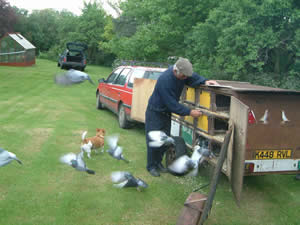 Compass training is based around the theory that race pigeons while en-route home from a race will remain in a large group until it’s time to “break” from the group and head to their own individual loft. Depending on weather conditions or wind direction and speed, the group could be any direction from their loft in this group when it’s time to break. This theory then also discards the fact that the birds will always break from a direct line of flight to the loft. Most literature will teach that a fancier needs to determine the direct line of flight to their loft along with other lofts and then determine where their birds would need to break. This theory doesn’t necessarily contradict the straight line of flight theory, but acknowledges that there is a point at which the birds need to break, but that the breaking point could be almost any direction from the location of the loft depending on race variables. The key word in this philosophy of training is that you are training your birds to BREAK, but not just from one single line of flight.
Compass training is based around the theory that race pigeons while en-route home from a race will remain in a large group until it’s time to “break” from the group and head to their own individual loft. Depending on weather conditions or wind direction and speed, the group could be any direction from their loft in this group when it’s time to break. This theory then also discards the fact that the birds will always break from a direct line of flight to the loft. Most literature will teach that a fancier needs to determine the direct line of flight to their loft along with other lofts and then determine where their birds would need to break. This theory doesn’t necessarily contradict the straight line of flight theory, but acknowledges that there is a point at which the birds need to break, but that the breaking point could be almost any direction from the location of the loft depending on race variables. The key word in this philosophy of training is that you are training your birds to BREAK, but not just from one single line of flight.
Race Variables
The variables to consider in a race are as follows:
(1) Weather: In case of rain and adverse weather, experienced pigeons may go down and wait it out while other birds will attempt to fly around such storm systems. Flying around a storm system may actually put them in completely different orientation from the loft instead of along the line of flight.
(2) Wind: direction and speed. Winds plays a huge factor in races. What one might consider a strong tail wind is not such an advantage once a bird over shoots his loft location or if the bird is coming in perpendicular to the loft location regarding the line of flight. From the breaking point a bird might be breaking trough a tough head wind or side wind. Wind direction and speed affects how the group of pigeons returning from a race will be oriented while approaching their final destination. Also important is how birds fly in head winds versus tail winds. In tail winds, birds then to fly very high and have a greater ability to stay together in one group. If birds are facing a tail wind, they will fly low to the ground, where is the ever present danger of wires, towers, vehicles etc. and the birds will separate more. The birds will separate because they do not like to fly up and down over large masses such as buildings. Birds prefer to fly around large objects and often the birds take separate routes. Also with the increased drag from high winds, more and more distance tends to separate the birds.
(3) Pull: When you have any group of birds going the same general direction there is a certain amount of “pull”, depending on where the greatest number of those birds are headed. If you watch your birds fly around the loft or you have a pair of strong binoculars and you watch them leave from a training toss you will notice there is often not one single leader in a group. The birds will fight for the head position. Sometimes, if a “dummy” gets in front of the flock, they will even turn and head the wrong direction. This is what also happens on race day. If a flock is headed North from the race point but to three different cities and three different clubs, probability is that more often birds from the club shipping the larger number of birds will have the “pull”. Their birds will be in front pulling the flock more towards their destination. At times, birds from the other clubs may also be in front, but if the numbers are in the other club’s favor, so is the probability of pull.
(4) Topography: Our birds like to follow the terrain. They will fly around a mountain rather than fly over it. They will follow valleys and fly around ridges. There had been some articles posted that birds follow roads and landmarks. If you consider that most roads were built according to the natural topography than one could draw the erroneous conclusion that birds follow roads. Look harder, and you may see that they are following the natural lay of the land.
(5) Confidence/Leadership: Confident birds that know where they are located and have been trained to lead rather than follow will break out of a group early, determine the best path of travel for themselves and will not be affected quite as much by pull or the instinct to “group” with other birds. This is accomplished by a lot of small group tossing and single tossing. It can also be achieved to a great extent with Compass Training. Birds that know where they are and have their memory location of where they are, are confident, will know to break and will head straight home.
Compass Training Your Racing Pigeons By Domanski Family Lofts
The Leading Online Pigeon Racing and Racing Pigeons Magazine – The Pigeon Insider


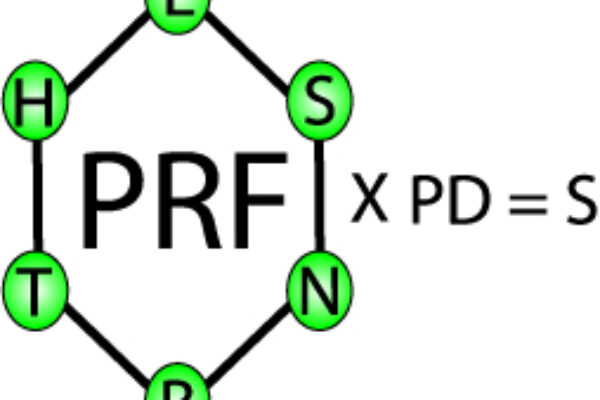
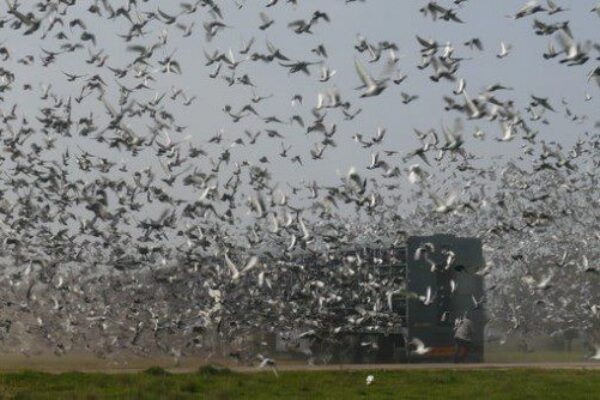
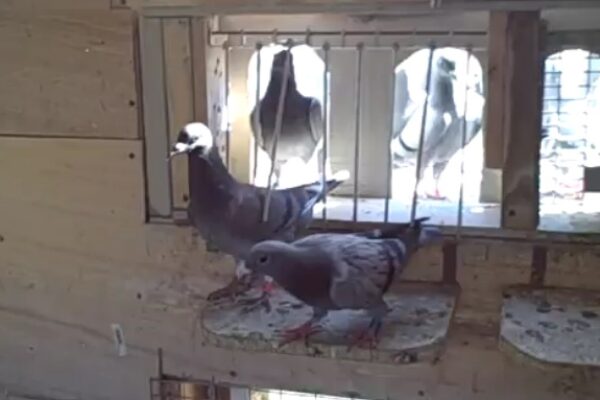
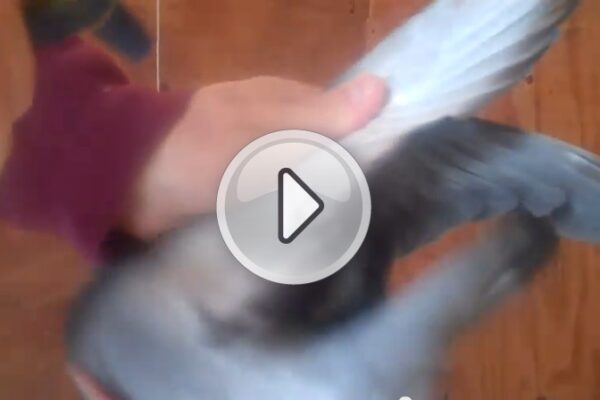
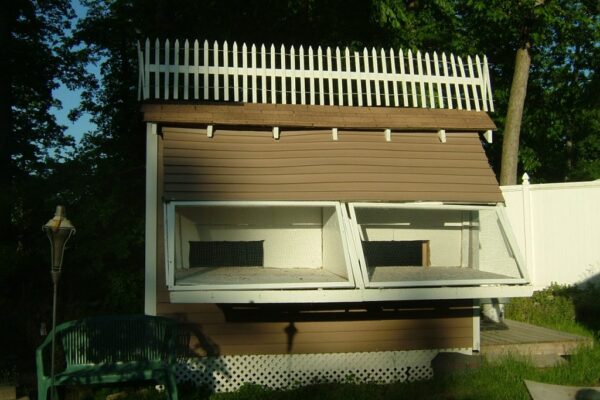


Well said Rachel olivieri
helow kind sir..Is it ok to race a south bird racing pigeon..?? to race in a north position race..tnx
GOOD ARTICLE CHRIS,I BELIEVE ANY BIRD THAT HAS ITS MIND ON THE JOB IS NEVER A FOLLOWER,THEY ONLY FOLLOW WHEN THEY,RE JUST HOMING.
interesting article
I support the author’s conclusion regarding compass training and releasing in subsequently smaller lot sizes until single tossing is achieved. Rather than thinking in terms “breaking” to suggest that at some point along the course a group of pigeons from say, Loft A, decide on the count of three – two – one – break. Think in terms of simply providing training conditions that support a pigeon to fly home. It’s really that simple. To fly home regardless of wind conditions, weather, terrain, large group, small group, etc.
I start off with short tosses around five miles. At this stage distance isn’t important. It’s all about navigational opportunities from a variety of points around the compass. If I begin with say 40 youngbirds, from the first toss, I will never release a group larger than 10 birds, ever. Release from a minimum of all four quadrants; N – S – E – W. Go to 5 birds per release, than 3, than 2, and finally single toss. It’s important that you maintain the bird’s confidence at a high level throughout this process and not either jump their distance too quickly or scale them down to single tossing prematurely. If you try this method you will get the feel of it from the bird’s performance. You’ll always be tempted to jump start the process because they perform so well, don’t do it! Remember, your training them to exercise their navigational faculties to fly home with confidence from any point on the compass and confidence is the key word.
It seems unwise to release your birds with other fancier’s birds to train them to “break”. You’re more likely to train them to “follow” instead. Bottom line, you don’t want the birds that are distracted and follow and these birds will reveal themselves long before the race season unfolds. The compass training method and small lot size provides the birds with the opportunity to learn how to fly home and not follow.
If you really want to go against the grain try the above system and don’t train more than 20 pigeons in a roomy loft with about 25 square feet per bird (length x width x height). Always hand feed your birds and make time to simply hang with them. You will be surprised at one, how enjoyable the experience is and two, how intimately you will know your birds and your birds you. And having done this, the all important motivational factor has been cast and will lend itself favorably regardless of the system one chooses to race as yearlings and beyond.